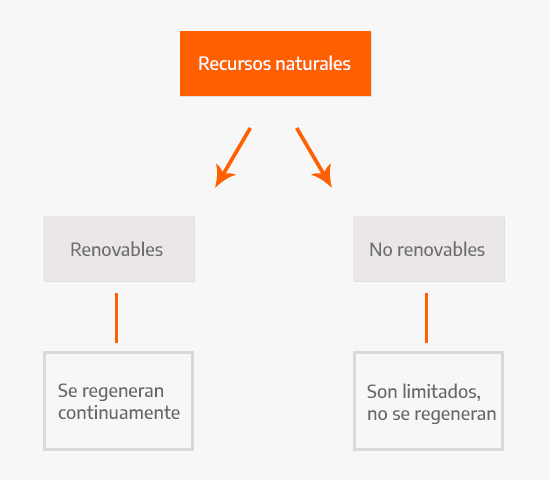Natural resources
What are natural resources?
Natural resources are those material goods that nature produces, without human intervention.
These are of great importance for economies, since they contribute to their development by providing raw materials, food, minerals and other basic goods to survive.
Characteristics of natural resources
The characteristics that define natural resources are the following:
- They are fundamental for the development of the economy and society.
- They are scarce and can wear out if they are not put to proper use.
- They are classified in renewable Y Non-renewable.
- I know they use or transform to satisfy human needs.
Types of natural resources
Natural resources can be classified into renewable Y Non-renewable.

Natural resources are renewable or non-renewable.
Renewable natural resources
The renewable natural resources They are that continually regenerate through natural processes. These can always be obtained and the only way that they run out is that they are not used with the proper use.
Some renewable resources are the water, the sun, the wind and the wood.
Non-renewable natural resources
The resources non-renewable natural They are that do not have the ability to regenerate naturally, so they can be finished. So much so that it is not possible to reuse these resources, because they are depleted with use.
Some non-renewable resources are the minerals, like gold, copper or iron, and fossil fuels, like oil or gas.
Examples of natural resources
Among the main natural resources, those most used by people and companies, are the following:
- Water.
- Sun.
- Wind.
- Resources from animals (milk, meat, skins, wool, eggs, feathers).
- Fruits and vegetables (corn, sunflower, tomatoes, strawberries, oranges).
- Wood.
- Minerals (gold, iron, silver, copper, zinc, cobalt).
- Petroleum.
- Diamonds.
Leave a Reply